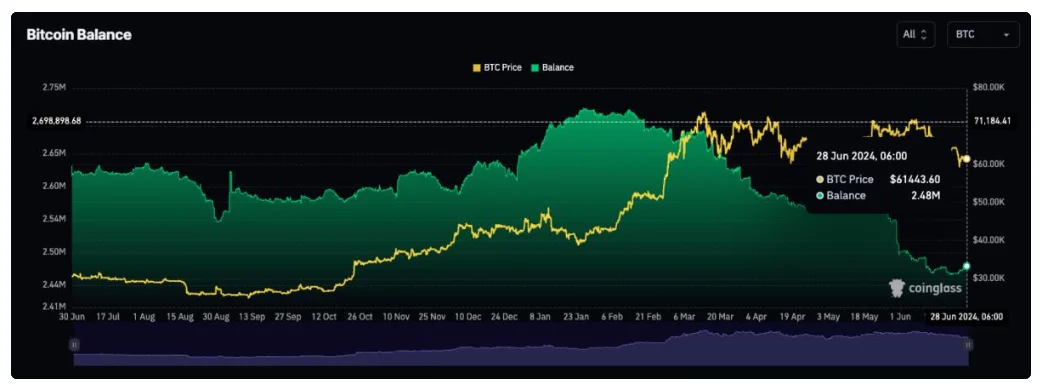Bitcoin ‘wholecoiners’ hold above 1 million mark for 13 months

The number of Bitcoin ‘wholecoiner’s – a name given to addresses holding one or more BTC – has stayed above 1 million for the last 13 months.
The one million ‘wholecoiner’ milestone was first reached on May 13, 2023, when Bitcoin was trading for just $27,000, according to data from Glassnode.
This number of wholecoiner wallet addresses reached an all-time high on Jan. 1 this year, with just over 1,024,000 wallets holding one or more Bitcoin, according to Glassnode.
Today, despite Bitcoin’s price rocketing to double that in May 2023, the number of wallet addresses holding one Bitcoin or more stands at 1,010,800.
While the round number ‘one million’ marks a strong upward trend of Bitcoin ownership, it;s worth pointing out that one Bitcoin wallet address doesn’t always represent a single person.
Many crypto investor have multiple Bitcoin addresses and other addresses belong to major institutions like cryptocurrency exchanges and investment firm that typically own large sums of Bitcoin.
Of the 19.7 million Bitcoin currently in circulation, 2.48 million of these – worth $152 billion – are held on major centralized exchanges such as Binance and Coinbase.

Additionally, a whopping 3 million BTC – worth $80.4 billion and accounting for 17% of the total circulating supply – are ‘lost forever,’ according to estimates from Glassnode.
When Bitcoin first launched on Jan. 3, 2009, only one wallet address – Sataoshi Nakamoto’s – held more than 1 Bitcoin.
This number quickly ballooned to 30.000 by the beginning of 2010 and grew at an incresing rate for the next 8 years.
There are times when Bitcoin wholecoiner wallet addressess have also dipped significantly, falling by 30.000 or more.
This has happened on three separate occasions: once between March and May 2016, between September and December 2018 during the depths of a persistent bear market, and once more between February and July 2021 during a sharp sell – off after a meteoric rally months before.
Magazine – Bitcoin layer 2s aren’t really L2s at all: Here’s why that matters.